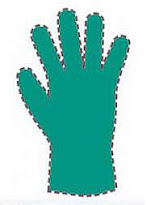TTAB Posts March 2023 Hearing Schedule
The Trademark Trial and Appeal Board (Tee-Tee-Ā-Bee) has scheduled eight oral hearings for the month of March 2023. Five of the hearings will be held via video conference; three will be held "in-person" in Alexandria, VA. Briefs and other papers for each case may be found at TTABVUE via the links provided.

March 7, 2023 - 10 AM [Virtual]: Alaskan Brewing & Bottling Co. v. Northern Hospitality Group, Inc. dba 49th State Brewing Company, Opposition No. 91264066 [Section 2(d) opposition to registration of ALASKA TRAILS PALE ALE. ALASKA 8 STAR LAGER, and ALASKA EIGHT STAR LAGER for "beer, ale and lager" [ALASKA, PALE ALE, and LAGER disclaimed], in view of the registered marks ALASKAN, ALASKAN WINTER ALE, ALASKAN AMBER ALT STYLE, ALASKAN ICY BAY, ALASKAN SUMMER KOLSCH STYLE ALE, ALASKAN HARD SELTZER, ALASKAN DISTILLING CO., and the word-and-design mark shown below, for beer and ale [WINTER ALE, ICY BAY and SUMMER KOLSCH STYLE ALE disclaimed; all but the first registration including a distinctiveness limitation "as to 'ALASKAN'"].
March 8, 2023 - 11 AM [Virtual]: In re Garan Services Corp., Serial No. 90433715 [Section 2(e)(1) mere descriptiveness refusal of WOOLY for "Footwear; Headwear; Hosiery; Sleepwear; Bottoms as clothing; Tops as clothing."]
March 14, 2023 - 10:30 AM [In-person]: Audemars Piquet Holding S.A. v. Haas Outdoors, Inc., Consolidated Oppositions Nos. 91242213 and 91242238 [Oppositions to registration of MOSSY OAK and MOSSY OAK & Design for "Jewelry; Watches" on the grounds of likely confusion with and likely dilution of the registered mark ROYAL OAK, in standard character and stylized form, for watches and jewelry.]
March 16, 2023 - 10 AM [Virtual]: In re SLC Hauppauge Development, LLC, Serial No. 90562295 [Section 2(e)(4) surname refusal of the mark CARLOW for various business and real estate services.]
March 21, 2023 - 10 AM [In-person]: In re Fredericia Furniture A/S, Serial Nos. 79310559 and 79318824 [Section 2(e)(2) refusal of FREDERICIA in standard form, for lighting fixtures, furniture, and business services, on the ground that the proposed mark is primarily geographically descriptive of Applicant’s goods and services, namely, Fredericia, Denmark, and refusal of FF FREDERICIA & Design absent a disclaimer of FREDERICIA on the same ground.]
March 21, 2023 - 1 PM [Virtual]: In re Laxamentum Technologies, LLC, Serial No. 90441532 [Section 2(d) refusal of GAMEGUARDIAN for "Providing website featuring a forum on video game cheats, video game information, news, game play strategies, frequently asked questions about video games, journals, previews, reviews and commentary on video games," in view of the registered mark GUARDIAN GAMES for "retail game stores; retail store services featuring games" [GAMES disclaimed].
March 22, 2023 - 2 PM [Virtual]: In re Exhart Environmental Systems, Inc., Serial No. 90006864 [Refusal to register the design shown below for "non-metal garden stakes sold wholesale; Decorative garden accessories, namely, figurines of plastic sold wholesale" on the ground that the mark consists of a nondistinctive product design that lacks acquired distinctiveness.]
March 27, 2023 - 11 AM [In-person]: In re Lindsay Hoopes, Serial Nos. 90498749 and 90498755 [Section 2(d) refusals to register NAPANAC for "Brandy; Fortified wines; Spirits" in view of the registered certification mark NAPA GREEN for wine derived from grapes grown in Napa Valley, California, and for promoting sustainable winery practices in Napa Valley, and in view of the registered certification mark NAPA VALLEY for wine.]
Read comments and post your comment here.
TTABlog comment: See anything interesting? Any WYHA?s
Text Copyright John L. Welch 2023.
















































